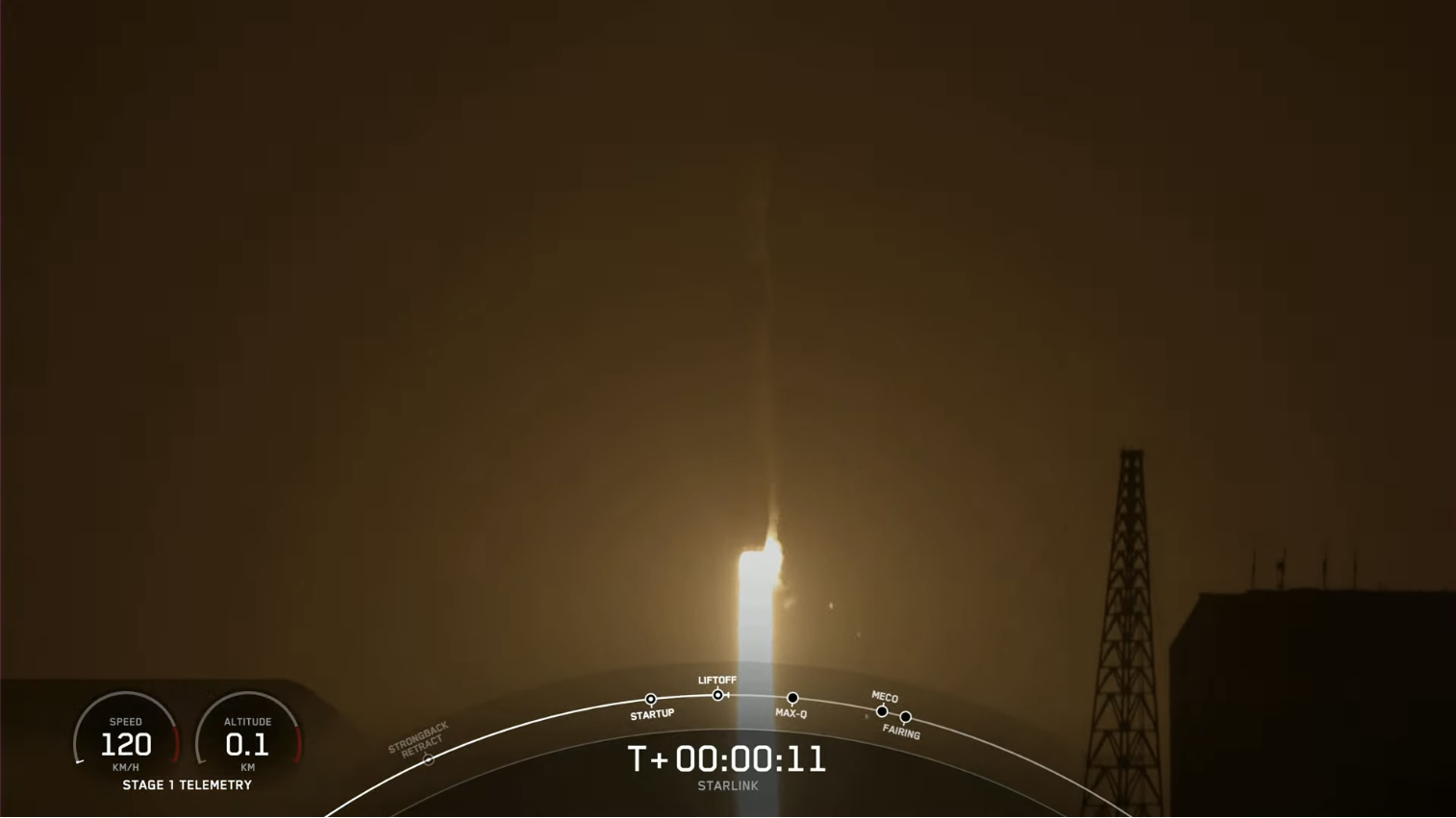
SpaceX smoothly flew its tenth mission in 2023’s first six weeks at 12:10 a.m. EST Sunday, as a 12-times-used Falcon 9 booster ferried the year’s fifth batch of Starlink low-orbiting internet communications satellites perfectly uphill. Only days after the Hawthorne, Calif.-headquartered organization tweeted that Starlink’s coverage had now expanded to include Iceland—bringing to 48 the total number of sovereign nations and worldwide markets now using the ever-expanding network—the B1062 core sprang from storied Space Launch Complex (SLC)-40 at Cape Canaveral Space Force Station, Fla.
Tonight’s just-past-midnight launch made chequered B1062 the fourth Falcon 9 booster to log a 12th mission in less than a year. She entered service back in November 2020, when she ferried the fourth Block III Global Positioning System (GPS) navigation and timing satellite on the first leg of its trek to Medium Earth Orbit (MEO).
Following the GPS III-04 launch, she was pressed rapidly back into service, flying twice in 2021—lifting GPS III-05 to orbit in June and the historic, all-civilian Inspiration4 crew of Shift4Payments billionaire Jared “Rook” Isaacman and crewmates Sian Proctor, Hayley Arceneaux and Chris Sembroski aboard Dragon Resilience into low-Earth orbit the following September—before becoming the first Falcon 9 booster to fly in 2022.
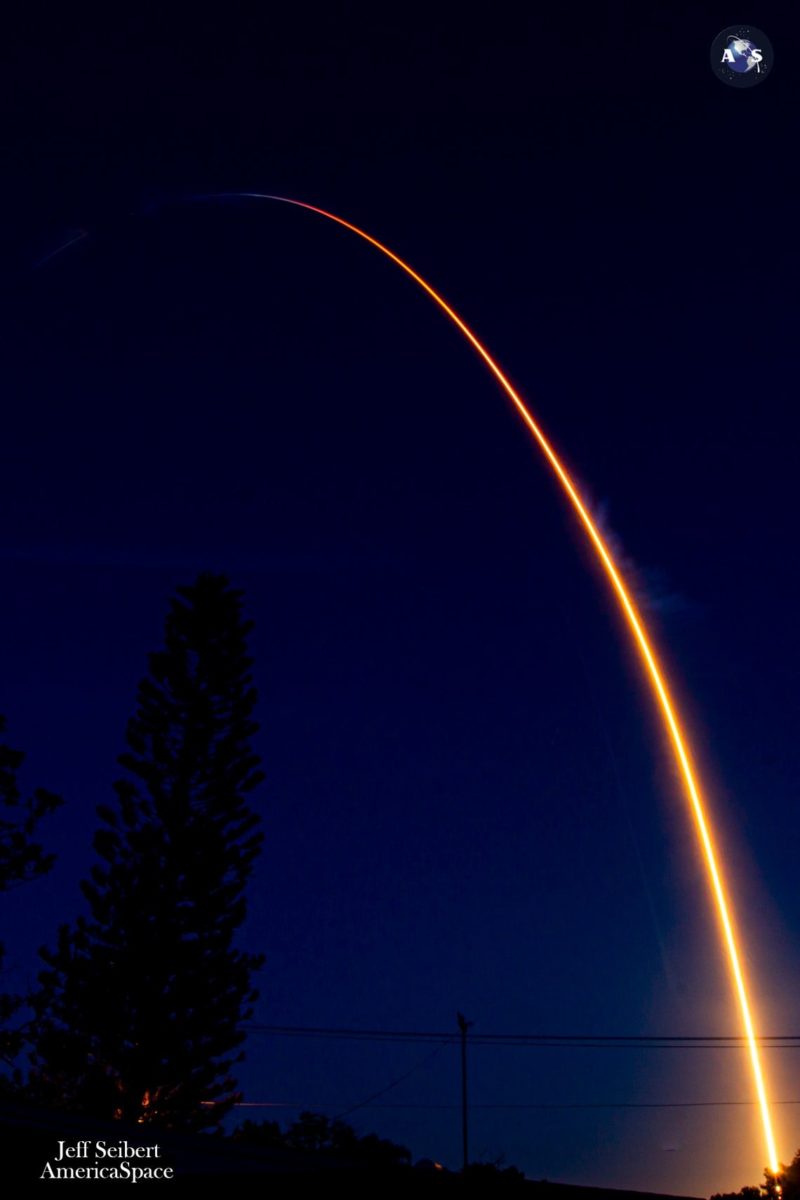
B1062 flew eight times last year, more than any other Falcon 9 within the bounds of a single calendar year. Notably, she flew twice last April, establishing a new record of only 21 days between launches by the same orbital-class booster.
The first of those launches carried Dragon Endeavour and Ax-1 crewmen Mike Lopez-Alegria, Larry Connor, Mark Pathy and Eytan Stibbe on the first leg of their 17-day mission to the International Space Station (ISS) for Houston, Texas-based AxiomSpace, Inc. Including tonight’s launch, she has lifted over 370 Starlinks and Egypt’s powerful Nilesat-301 geostationary communications satellite to orbit.
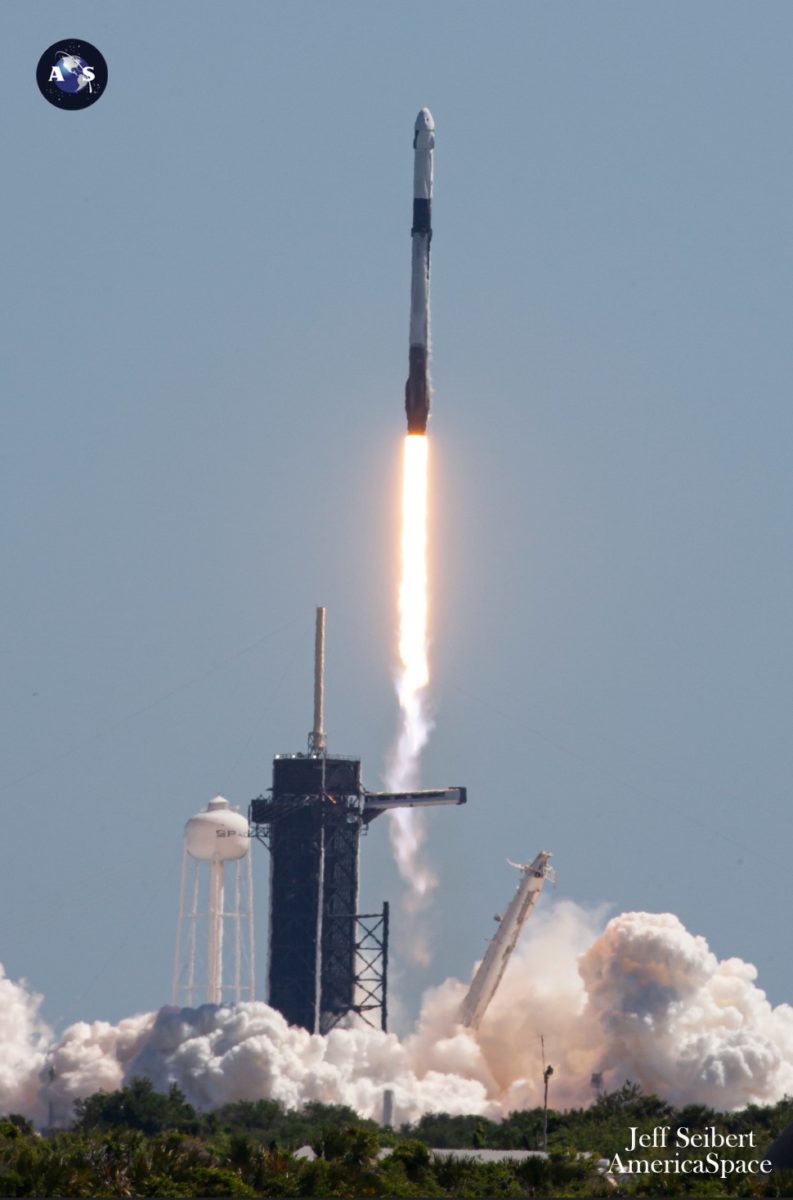
Sunday’s pre-dawn launch, which came at 12:10 a.m. EST, was tasked with deploying a “stack” of 55 Starlinks, totaling around 37,000 pounds (16,800 kilograms), and marked the fifth dedicated flight of these flat-packed satellites this year. Starlink’s progress as an internet provider on the world stage advanced in leaps and bounds in 2022, notably through emergency provision granted to Ukraine, following Russian President Vladimir Putin’s invasion last February.
Starlink availability last fall expanded to include Malta, Japan, Jamaica, Finland and—controversially, following the hijab protests—also Iran. In January, Peru, Nigeria and Colombia joined the network, followed by Iceland earlier this month, bringing to 48 Starlink’s total number of sovereign nations and worldwide markets spanning North and South America, Europe, Asia and Oceania.
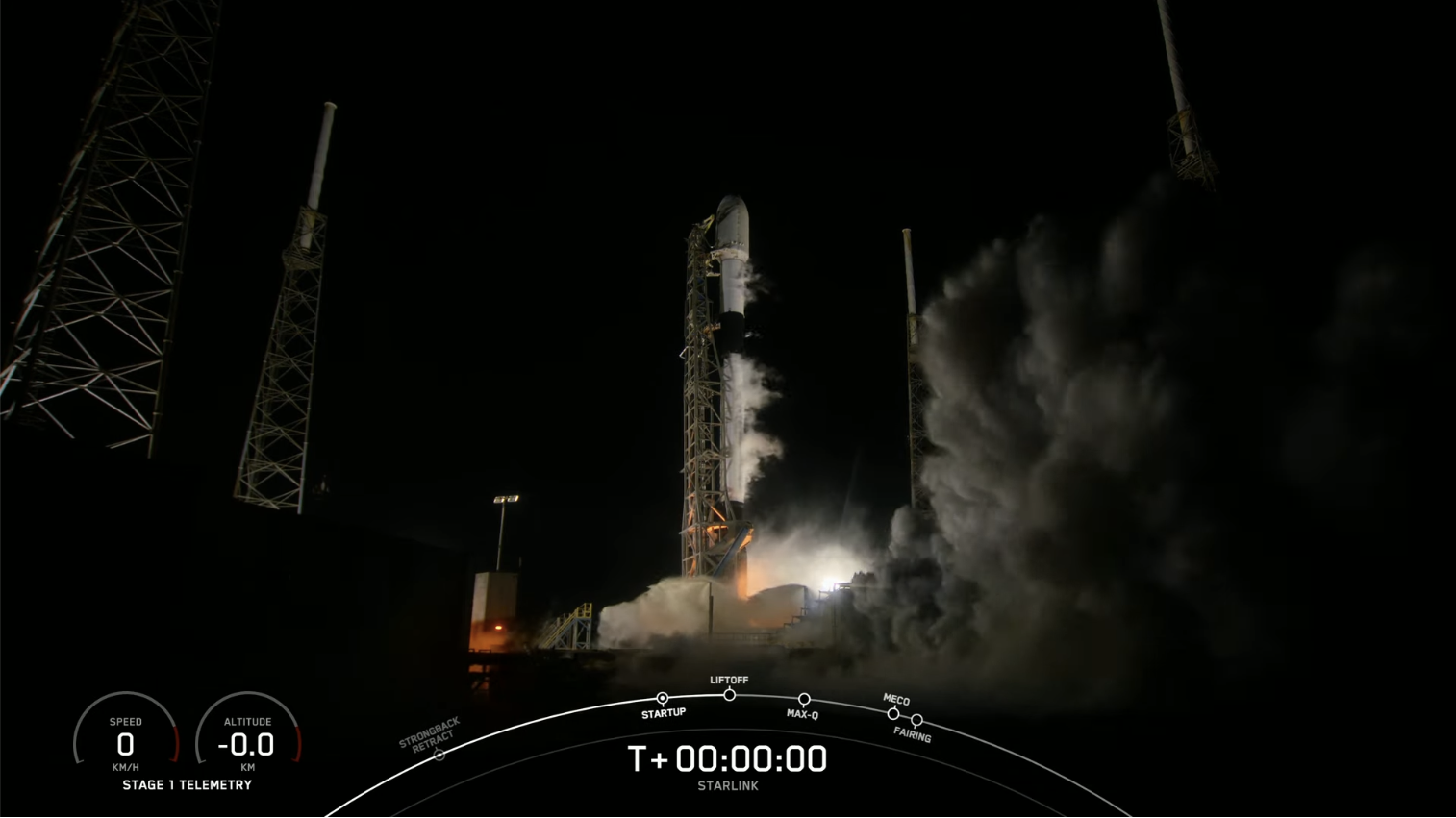
Nigeria’s accession last month makes it the first African nation to receive Starlink service. And Sunday’s midnight launch brings 2023’s running Starlink tally to 264 and the total number of these small satellites lofted since May 2019 to to 3,926.
In readiness for launch, the Autonomous Spaceport Drone Ship (ASDS), “A Shortfall of Gravitas”—having already recovered two Falcon 9 booster cores in January—put to sea out of Port Canaveral last Wednesday, bound for a position about 410 miles (660 kilometers) offshore in the Atlantic Ocean. But the weather outlook for Sunday’s just-past-midnight launch looked decidedly pessimistic, with the 45th Weather Squadron at Patrick Space Force Base estimating barely a 20-percent likelihood of acceptable conditions at T-0.
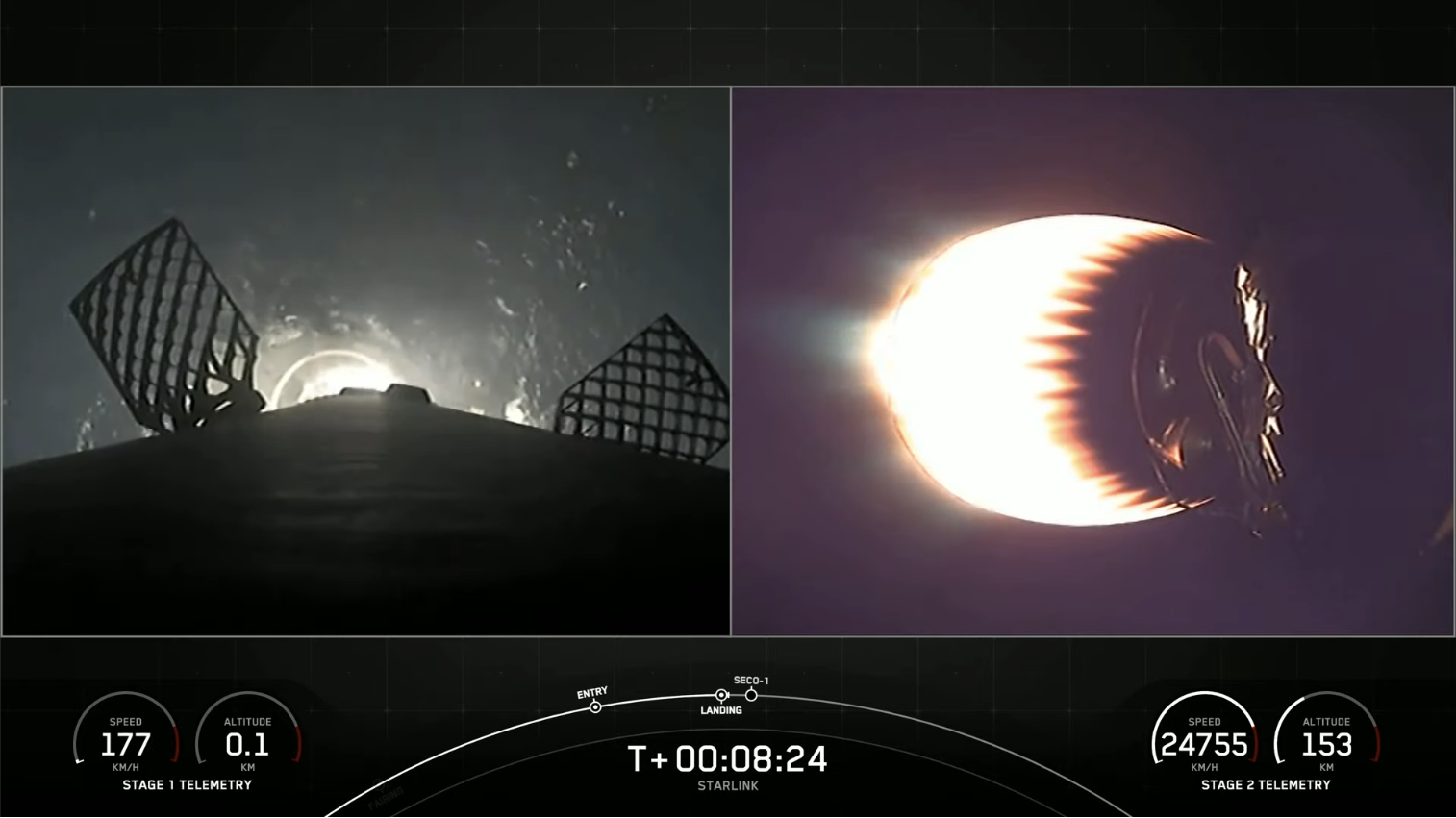
“A strong cold front will slice through the Florida Peninsula later today and bring rounds of strong storms through North and Central Florida this afternoon and evening,” the 45th noted in its L-1 update on Friday. “The associated low-pressure system will lift north into Georgia…and will unfortunately swing the cold front through the Spaceport near to or during the launch window.”
This was expected to potentially violate both the Cumulus Cloud Rule and Thick Cloud Rule, as well as creating a threat for Liftoff Winds. But three launch opportunities existed in Sunday’s pre-dawn hours: a first at 12:10 a.m. EST, a second at 1:51 a.m. EST and a third at 3:32 a.m. EST. Should all three of those T-0 chances be missed, another trio opened late the following evening—at 11:55 p.m. EST Sunday and 1:39 a.m. EST and 3:07 a.m. EST Monday—with weather expected to improve to 70-percent favorable.
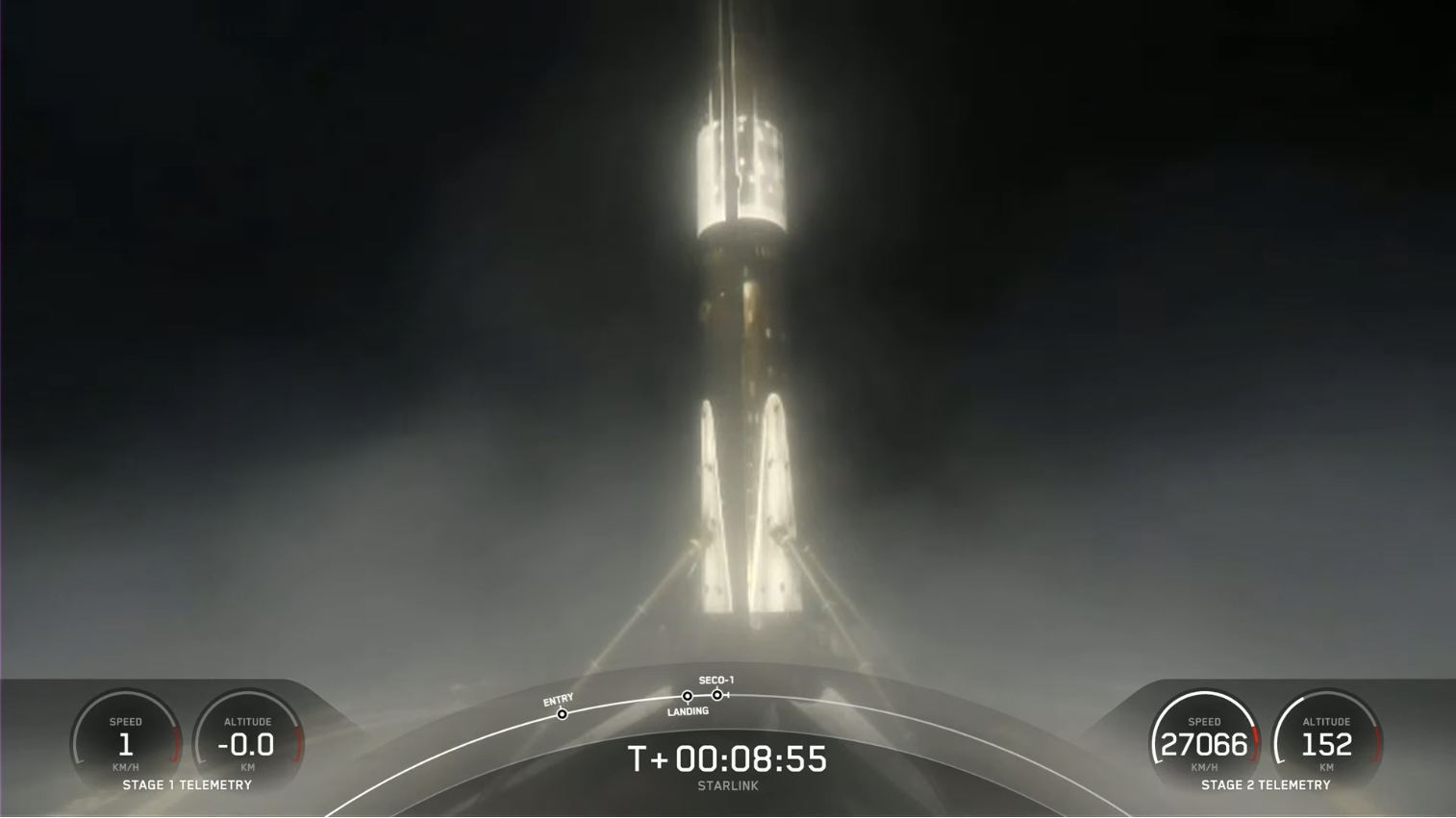
But in the final hour before the opening of Sunday’s first launch attempt, the weather picture dramatically brightened, offering a 60-percent chance of being acceptable at T-0. And B1062 went smoothly airborne at 12:10 a.m. EST, the exhaust of her nine Merlin 1D+ engines piercing the darkness as she powered uphill.
Two and a half minutes later, her task done for the 12th time, she separated from the stack and pirouetted to a smooth, on-point touchdown on ASOG’s deck. It marked the 80th successful ASDS landing in a row and the 132nd time that a Falcon-class booster has landed safely on a drone ship since April 2016.
The single Merlin 1D+ Vacuum engine of the second stage went on to complete a standard, six-minute “burn” to deliver the 55-strong Starlink stack into orbit, preparatory to deployment a little more than an hour into the mission. With the completion of tonight’s flight, SpaceX has launched ten missions in 2023’s first six weeks, placing the organization securely on track for its oft-stated goal of up to a hundred launches this year.
Up next, possibly as soon as Wednesday, another Starlink-laden Falcon 9 may fly out of Vandenberg Space Force Base, Calif., for the year’s third launch from the West Coast. Two more high-profile missions are scheduled later in February: the powerful Inmarsat-6 F2 Ka-band/advanced L-band geostationary communications satellite targeted for early on the 18th and Dragon Endeavour—carrying U.S. astronauts Steve Bowen and Warren “Woody” Hoburg, Russian cosmonaut Andrei Fedyayev and Sultan Al-Neyadi of the United Arab Emirates (UAE)—to the ISS on the 26th.




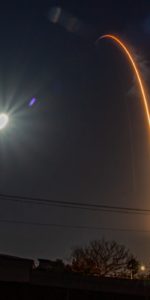

3 Comments
3 Pings & Trackbacks
Pingback:SpaceX Launches 35th Vandenberg Mission, Delivers Starlinks, Looks to Busy Month-End - AmericaSpace
Pingback:SpaceX Launches 35th Vandenberg Mission, Delivers Starlinks, Looks to Busy Month-End - Space News
Pingback:As SpaceX Lofts 40 OneWeb Satellites, Relativity Space Aims for Launch Attempt #2 on Saturday - AmericaSpace